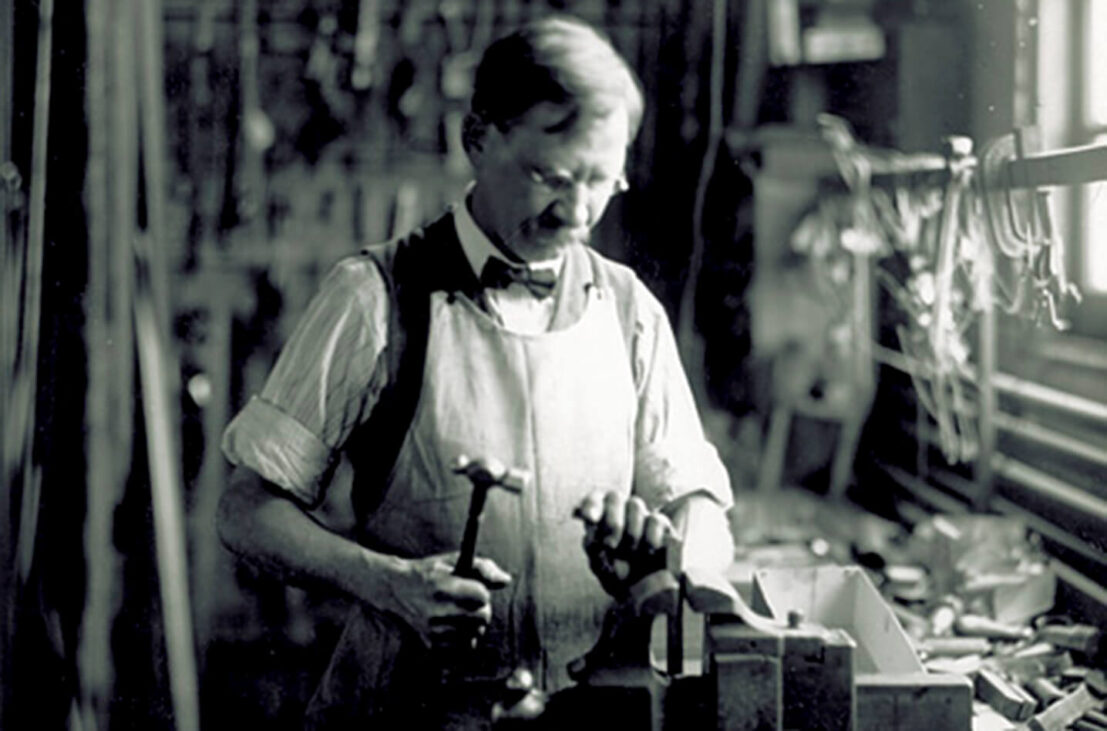
May 19, 2021
Aviation Maintenance Technician (AMT) Day is celebrated every year on May 24, but not many people know the significance of that date. It’s the day 153 years ago that Charles (Charlie) Taylor – one of the giants of aviation – was born.
Taylor was the first powered aircraft mechanic. Two bicycle mechanics in Dayton, OH had hired him in 1901 to help them in their shop. Then, when the Wright brothers were pursuing their experiments with gliders, the job fell to Taylor to build a wind tunnel. Ultimately, Orville and Wilbur entrusted the very mechanically inclined Taylor with much of the work designing and building what would become the engine that would power the first flight on Dec. 17, 1903, on the sands of Kill Devil Hills, NC.
Taylor continued to work for the Wrights as they built new airplanes and found a place in Dayton suitable for their exploits. They built a hangar, and Taylor managed the facility while the Wrights were traveling, becoming the first airport manager.
After years in their employ, Taylor took on other jobs and eventually lost touch with the Wrights. He died nearly destitute in California in 1956.
Today, AMTs marvel at the man who invented the first aircraft engine without any guidance or templates.
“He was a genius, and placed appropriately in time and space,” said Laura Scanlan, director, fleet maintenance for Executive Jet Management. “I imagine there have been advancements he anticipated even then but could only hope we’d figure out the technology. I’d love to see his reaction to a vertical takeoff in an F-18!”
Scanlan believes that biggest changes in aviation maintenance have come through the updates in technology, especially avionics.
“As the skies get busier, demands increase and we develop new systems. We see constant leaps in navigation, communication, connectivity, and even in the way aircraft now monitor and report on their mechanical systems,” she said. “They also require the AMT to constantly educate themselves on these up-and-coming systems in order to speak to them intelligently, budget for them, and troubleshoot them.”
Supersonic aircraft and the advent of advanced air mobility are aviation’s newest frontier, looming big on the horizon just as powered flight did in 1903, according to Greg Hamelink, chairman of NBAA’s Maintenance Committee and senior manager flight operations and maintenance at Stryker Corporation. “Supersonic business aircraft are completely uncharted territory,” noted Hamelink. “Nonetheless, AMTs still need to learn the basics, because somebody is still going to have to maintain a Cessna 421, for example.”
Hamelink said AMTs must now possess good computer skills and have much more of an information technology (IT) mind. “Today’s toolbox looks completely different, including the use of robotics and virtual reality,” he said.
James Huntoon, vice chair of the Maintenance Committee and director of fleet and MRO partnerships at Viasat, agreed: “Today’s AMT skill set is still evolving, which is making it more exciting.
“We see a need for more individuals coming from other areas, such as computer science, as aircraft today are technologically advanced,” he added. “ There is an amazing opportunity for avionics and IT- related technicians who may or may not have an A&P, as there are a growing number of AMT careers where IT-related skills are replacing what used to be a mechanically-driven skillset.”
Taylor, who made every part of the first engine from scratch, would undoubtedly be amazed.


 International Business Aviation Council Ltd.
International Business Aviation Council Ltd.